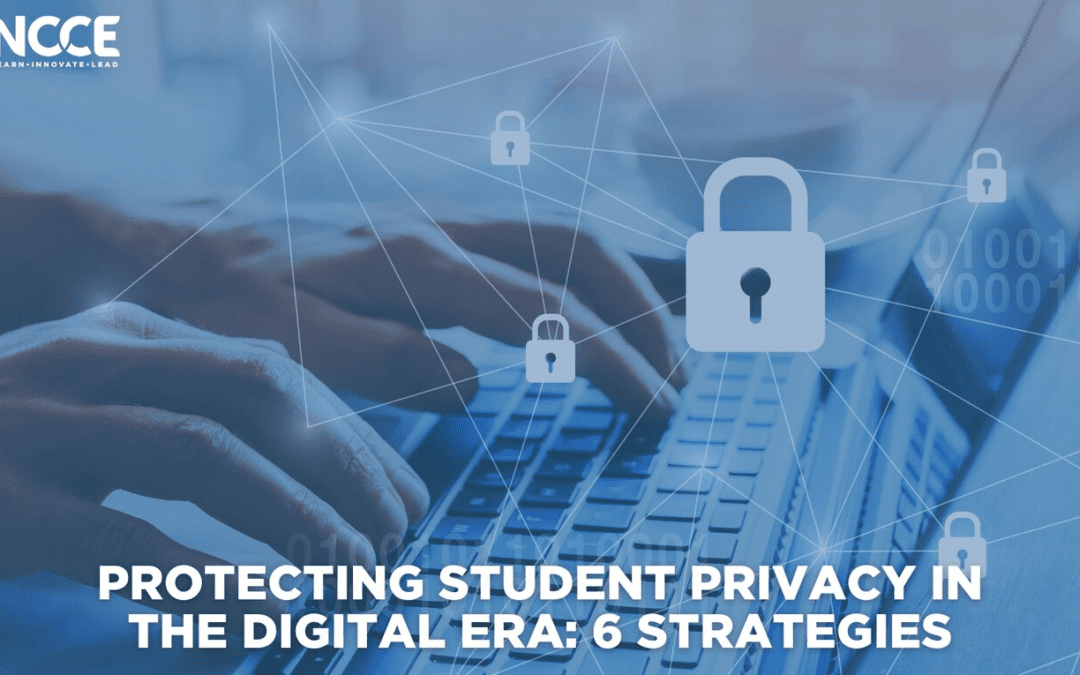Technology has become integral to education, transforming how students learn and interact. From remote classrooms to online homework assignments, K-12 students are increasingly immersed in an environment where more and more information is being tracked and transmitted online. Technology has become crucial for managing school administration, including attendance records, grades, and communication between administrators, teachers, coaches, parents, and students.
This development has many benefits, including better communication, more collaborative relationships, and instant feedback. At the Northwest Council for Computer Education (NCCE), we view the integration of technology as yielding an overall positive effect on schools, helping students prepare for a much more interconnected and technologically-rich world.
However, these advancements come with inherent risks. Protecting student privacy in this atmosphere is paramount, as student information becomes vulnerable to exploitation through data breaches. Consequently, it is incumbent on schools and school districts to use these systems to address these dangers and develop strategies that safeguard student privacy.
Risks Associated with Digital Learning
Digital tools like tablets, laptops, and educational apps have revolutionized learning experiences and are now ubiquitous in classrooms and backpacks. Using these tools has become second nature, but their ubiquitousness can lead to lax habits in which people trust them too much. In other words, their utility can blind people, specifically young students, to the need to care about how these tools are used.
One of the primary dangers is unauthorized access to student data. Cybercriminals can exploit personal information such as photos, names, addresses, activities, and academic records for identity theft, victim profiling, and other malicious activities. Additionally, using educational apps and online platforms often involves data collection practices that may not be transparent to parents and educators.
Another significant risk is cyberbullying. Digital platforms can shield the identity of bad actors, emboldening bullies and predators and making it easier for them to harass and intimidate their peers or even strangers. Cyberbullying can have severe psychological impacts on students, affecting their academic performance, mental health, and even physical safety.
Six Strategies to Protect Student Privacy
There are always risks when sensitive information is stored or transmitted, and schools and parents need to take proactive measures to protect student privacy. Here are six strategies that can help:
- Educate Students and Staff: Education is the first line of defense against privacy threats. Schools should conduct periodic and thorough training sessions for students, teachers, and staff on digital literacy and privacy awareness. Students should learn the importance of protecting their personal information and recognizing potential threats. Teachers and staff should be trained on data protection practices and the ethical use of technology in the classroom. Provide educator training to ensure everyone is vigilant in protecting your school and district.
- Implement Robust Data Protection Policies: Schools must establish clear data protection policies that outline how student information is collected, stored, and shared. These policies should comply with legal requirements, such as the Family Educational Rights and Privacy Act (FERPA). This law imposes requirements on schools to protect the privacy of student education records. Schools should also conduct regular audits to ensure compliance with these policies.
- Use Secure Digital Tools: Schools should prioritize security and privacy features when selecting digital tools and platforms for educational purposes. Platforms that offer end-to-end encryption, data anonymization, and access controls can significantly reduce the risk of data breaches. Schools should also regularly update software and applications to protect against vulnerabilities.
- Foster Parental Involvement: Even if students may push back, parents must not shy away from playing a central role in protecting their children’s privacy; the risks associated with a breach are too serious. Schools should engage parents by providing them with information about the digital tools their children are using and the associated risks. Parents should be encouraged to monitor their children’s online activities and openly discuss safe online behavior.
- Limit Data Collection: Schools should adopt a minimal data collection approach, gathering only the information necessary for educational purposes. Limiting data collection reduces the risk of sensitive information being compromised. Additionally, schools should ensure that third-party vendors adhere to strict data privacy standards. Look for partners working to keep you safe by taking voluntary pledges.
- Promote Safe Online Behavior: Encouraging safe online behavior is vital in protecting student privacy. Schools should teach students why using strong passwords is critical, reasons to avoid sharing personal information online, and cautioning them about how others can exploit information they post on social media. Promoting a culture of digital responsibility and getting students involved thinking about cybersecurity empowers students to make intelligent decisions about their online activities.
While technology offers numerous benefits for education, it also poses significant risks. Protecting student privacy requires a collaborative effort between schools, parents, and students that is ongoing, updated, and prioritized to ensure a safer digital environment for students. To learn more about how technology can be utilized safely and effectively in educational settings, please contact NCCE.

